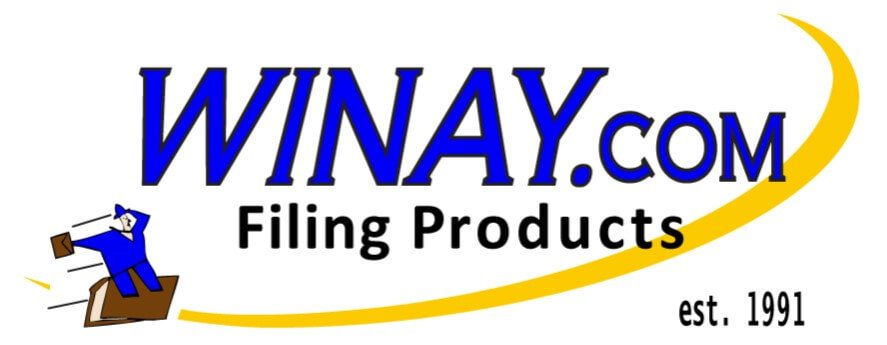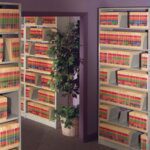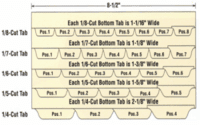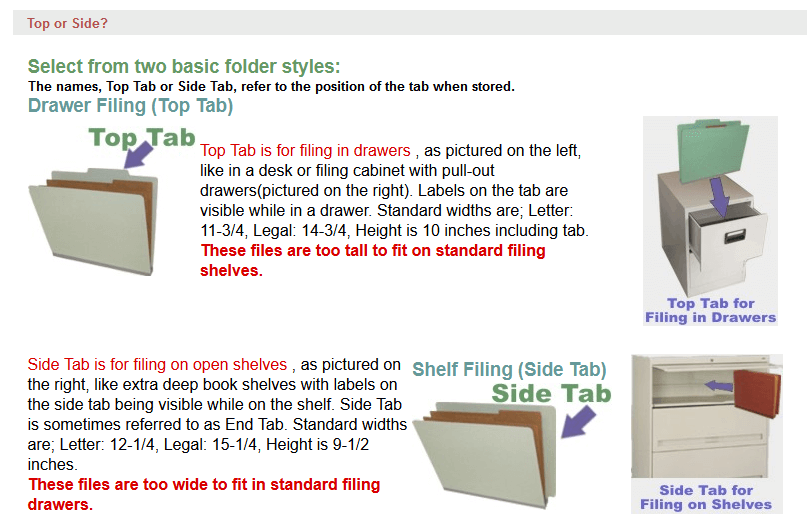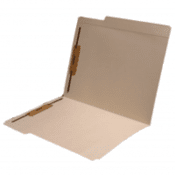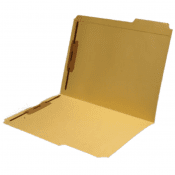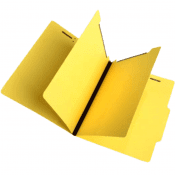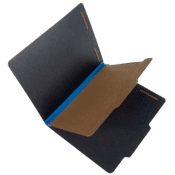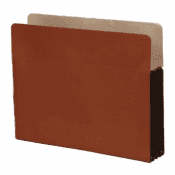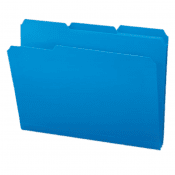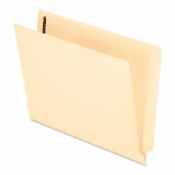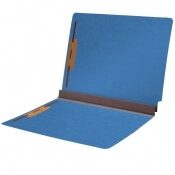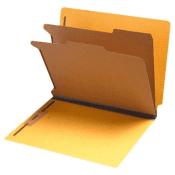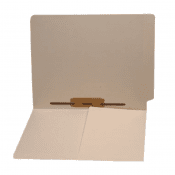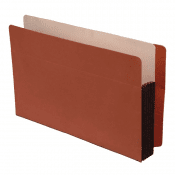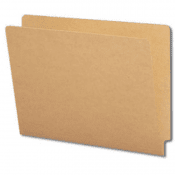Top Tab or End (Side, Shelf) Folders
Top Tab Folders
Top Tab Folders (also known as drawer folders) have tabs on the top with file headings that can be read while the folders are in a drawer. Tab sizes vary and are designated based on the size of each tab in proportion to the total length of the folder. They can be:
- Straight cut – there is one long tab.
- 1/3 cut – there are three tab positions, each is approximately 1/3 of the total length of the folder; tabs are cut to be in the left, center or right positions.
- 1/5 cut – similar to the 1/3 cut, except there are five tab positions, each being 1/5 of the total length of the folder.
- 2/5 cut – there are only two tab positions, the right and the right of center (ROC) positions; ROC is somewhat like a left position, but doesn’t extend to the end of the folder because the tabs are only 2/5 of the total length.
- 1/2 cut – there are two tab positions, left and right.
A top tab system is generally best when:
- You have relatively small amounts of records
- Files are used by only a few personnel
- Records are kept in desk drawers
- Hanging folders are preferred
End Tab Folders (Side Tab or Shelf Folders)
End Tab Folders (also known as side or shelf folders) are a great way to keep an organized file system. They file your folders left to right just as books as filed in a library. The full cut end tab is where you code the contents of the folder and is easily seen for quick access. End Tab Folders filed left to right also take up less space than Top Tab Folders that are generally filed front to back
End tab systems work best when:
- Office space for a filing system is limited
- There are very large numbers of files
- Many people need to access the files at the same time
- Equipment costs need to be kept at a minimum
The tab style you choose depends on a number of factors within your office. Both top tab and end tab have distinct advantages. Consider these criteria as you plan your filing solution:
- Total number of records you plan to keep in the system
- Amount of available office space you have for a filing system
- Number of personnel who will access the records
- Type of filing equipment you have or plan to buy
Either system can be very efficient if a color-coded indexing method is used, and Out Guides are used to track folders that are removed from the system. End tab systems are the most efficient and least costly, but top tab systems are still widely used by most small offices.
Organized Filing Systems use Great FILING PRODUCTS.
